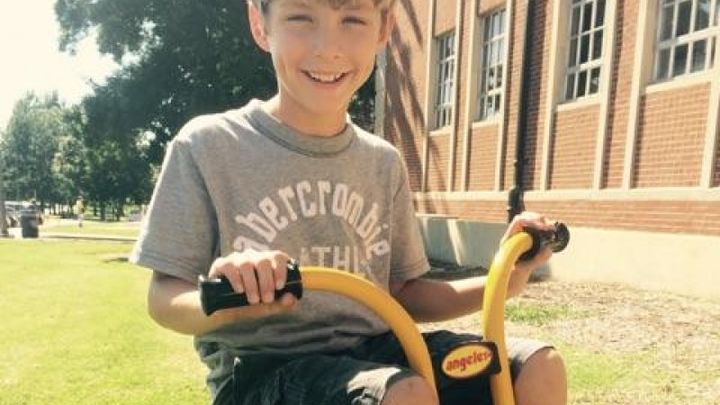
TRAINING WITH TRIKES
ABOUT OUR PROJECT
We are a group of Tennessee Technological University students trying to improve the quality of life of visually impaired individuals. Currently, we are developing a training program to teach visually impaired children how to effectively use echolocation to independently navigate the world around them. Our echolocation training system will provide visually impaired children with the skills and confidence needed to independently navigate new and unfamiliar places, creating opportunities that wouldn’t be possible otherwise. Consisting of two parts, the system combines physical sensory feedback with auditory echolocation training to help the child associate various echos with specific objects.
Visually impaired children miss out on coming of age activities that can have a significant impact on their development. To a child, learning to ride a tricycle is a rite of passage. Yet more importantly, riding a tricycle is a developmental milestone. Through riding a trike, children develop strength, balance, coordination, confidence, a healthy heart, healthy lungs, a strong skeletal system, and crucial motor skills. Yet, riding a trike is an activity that most visually impaired children do not get the opportunity to experience, which can have a negative impact on both their physical and mental development. Because of this, the first phase of our system is centered around riding a tricycle. We are developing a tricycle attachment that uses vibration motors to provide children with detailed information regarding objects in their immediate path. Through this vibration feedback, the child will be able to see what obstacles are in front of them. Integrating a trike into the training system also creates a fun environment for the children that will hopefully make them enthusiastic about echolocation.
Currently, there aren’t enough quality instructors capable of teaching the visually impaired how to echolocate in an unobtrusive manner. Due to a lack of quality instructors and limited exposure to effective echolocation techniques, some have concluded that echolocation is inherently intrusive, which isn’t the case. Our system is easily scalable and contains a device that helps the user echolocate unobtrusively. By making this technology widespread and affordable we hope to drastically increase the number of people that can learn how to echolocate effectively without drawing unwanted attention to themselves.
Our work is modeled after that of Daniel Kish, the world’s leading expert on human echolocation. Your contributions will give us the funding necessary to build and test the prototypes needed to turn this system into a viable product that can benefit the entire visually impaired community. Upon donating, you will receive exclusive updates on our progress. Thank you for your generosity!
We are a group of Tennessee Technological University students trying to improve the quality of life of visually impaired individuals. Currently, we are developing a training program to teach visually impaired children how to effectively use echolocation to independently navigate the world around them. Our echolocation training system will provide visually impaired children with the skills and confidence needed to independently navigate new and unfamiliar places, creating opportunities that wouldn’t be possible otherwise. Consisting of two parts, the system combines physical sensory feedback with auditory echolocation training to help the child associate various echos with specific objects.
Visually impaired children miss out on coming of age activities that can have a significant impact on their development. To a child, learning to ride a tricycle is a rite of passage. Yet more importantly, riding a tricycle is a developmental milestone. Through riding a trike, children develop strength, balance, coordination, confidence, a healthy heart, healthy lungs, a strong skeletal system, and crucial motor skills. Yet, riding a trike is an activity that most visually impaired children do not get the opportunity to experience, which can have a negative impact on both their physical and mental development. Because of this, the first phase of our system is centered around riding a tricycle. We are developing a tricycle attachment that uses vibration motors to provide children with detailed information regarding objects in their immediate path. Through this vibration feedback, the child will be able to see what obstacles are in front of them. Integrating a trike into the training system also creates a fun environment for the children that will hopefully make them enthusiastic about echolocation.
Currently, there aren’t enough quality instructors capable of teaching the visually impaired how to echolocate in an unobtrusive manner. Due to a lack of quality instructors and limited exposure to effective echolocation techniques, some have concluded that echolocation is inherently intrusive, which isn’t the case. Our system is easily scalable and contains a device that helps the user echolocate unobtrusively. By making this technology widespread and affordable we hope to drastically increase the number of people that can learn how to echolocate effectively without drawing unwanted attention to themselves.
Our work is modeled after that of Daniel Kish, the world’s leading expert on human echolocation. Your contributions will give us the funding necessary to build and test the prototypes needed to turn this system into a viable product that can benefit the entire visually impaired community. Upon donating, you will receive exclusive updates on our progress. Thank you for your generosity!
Organizer
Chance Williams
Organizer
Cookeville, TN